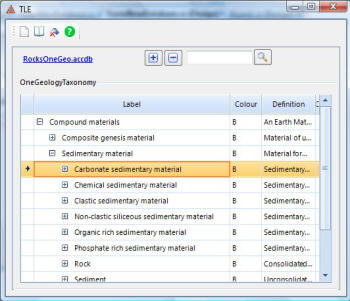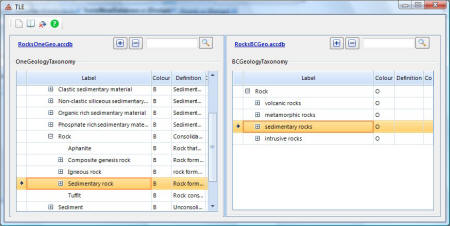
TLE is a powerful tool for creating, manipulating, reviewing and displaying hierarchical data.

It uses the power of WYSIWYG editing in an easy-to-use graphical environment — all with point-and-click and drag-and-drop ease.

Compare and Cross-Edit
TLE provides a familiar visual environment to work in. Use it to enter and edit data, rearrange a single hierarchy, or compare and cross-edit two related hierarchies side-by-side.

A Tool for Creating, Maintaining, Distributing and Exploring Standardised Hierarchical Vocabularies
The Internet provides unlimited opportunities for the sharing of
scientific information. For successful integration of information
from different sources, however, it is essential that the same
(standard) vocabularies are used for different data sets.
Since many scientific vocabularies are hierarchically structured,
TLE is a very useful tool for anyone interested in
working with standardised science languages.
TreeLists (hierarchies) created with TLE can be easily
transferred to co-workers. Unfamiliar classification systems can be
easily explored, annotated, and adjusted, using TLE.
Also, most importantly, the database format used by TLE
makes its data sets easy to program into existing or new software
applications.
TLE enables the creation of taxonomies from scratch as well as the ability to import data. Data can be imported from Excel templates, SKOS files as well as Aristotelian Ontology OWL files. See Import Formats for details.
Aristotelian Taxonomies
An Aristotelian Taxonomy is a taxonomy where each term is described in terms of a set of properties. For example, you could define a Granite Rock as consolidated material that is acidic, has a plutonic genesis and crystal particles. The list of terms with their properties is fed into a computer program which generates the taxonomy structure.
Defining your taxonomic terms in terms of their properties provides a clear definition of each term, scientific justification for the taxonomic structure, forms the basis for constructive debates within the community, creates broader consensus and adoption of the taxonomy within the community and may even lead to scientific discovery. Read more..
